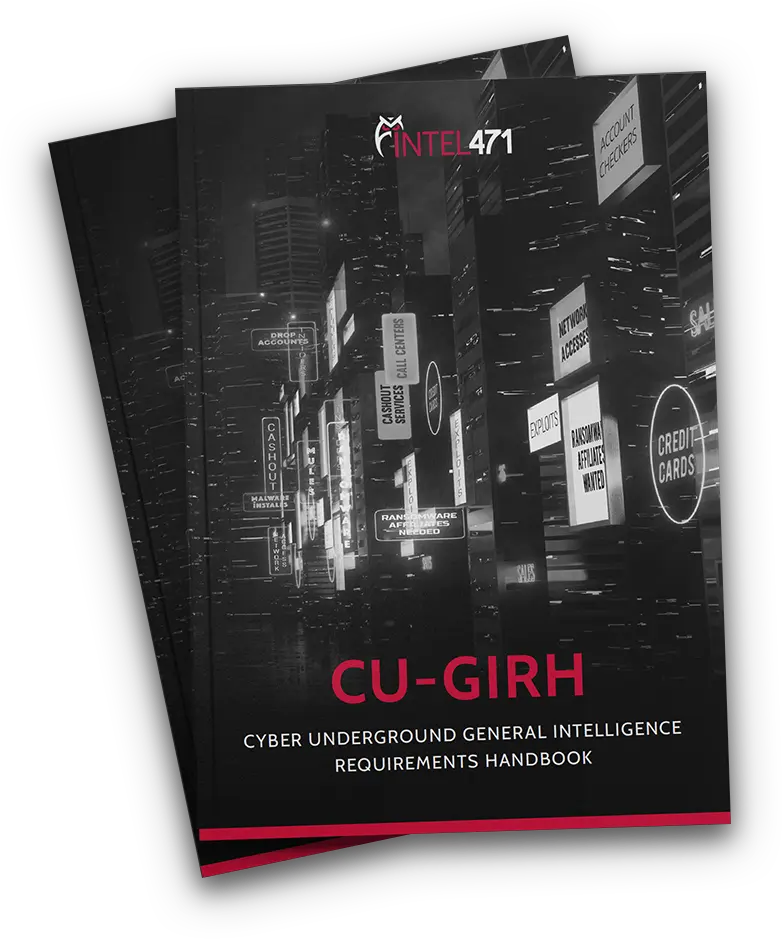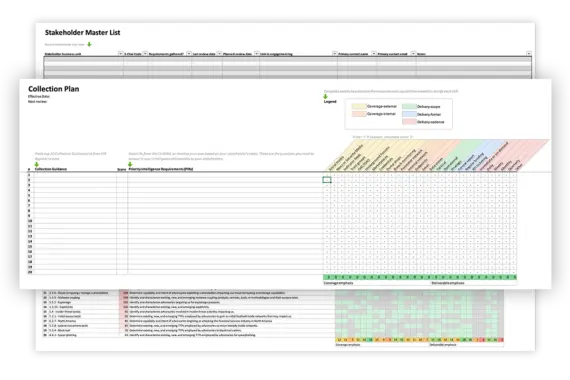Intel 471 General Intelligence Requirements (GIR) Framework

This handbook is a baseline tool to assist security professionals and teams in organizing, prioritizing, and producing cyber underground intelligence.


TITAN delivers structured technical and non-technical data and intelligence that is continually updated by our global team and automated processes. Intelligence is mapped to Intel 471's Criminal Underground General Intelligence Requirements (CU-GIR) framework and is driven by your Prioritized Intelligence Requirements (PIRs).
Intel 471 shapes its intelligence collection focus and production based largely on GIRs prioritized by customers. Using the CU-GIRH, each customer identifies and ranks a selection of GIRs which Intel 471 employs as guidance for daily intelligence collection, reporting, and success measurement.

Are you an intelligence practitioner or stakeholder looking to gain hands-on experience building or enhancing your organization’s intelligence plan? Join us for an exclusive training for building a successful intelligence program by offering our secret sauce used to safeguard organizations worldwide.
"The material was great, the delivery was great, the exercises were really useful to learn the resources. Really looking forward to applying the information and resources to starting a legit CTI program at my company."
Stay informed with our weekly executive update, sending you the latest news and timely data on the threats, risks, and regulations affecting your organization.